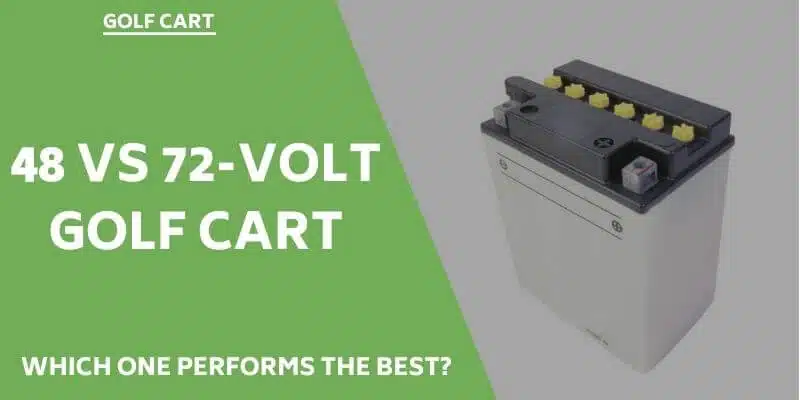Although it is marketed as a fairway wood, Youtubers and bloggers claim that it can replace your driver. But, we will be the judge of that in this Vixa V12 Review.
What To Consider Before Buying a Driver
Loft
The best place to start when looking for a new driver is the loft. The stronger the loft of the driver, the lower your ball flight will be. Conversely, weaker lofts are easier to launch skywards consistently.
As a guideline, Golfweek’s Jackson Lewis suggests players who swing a driver over 105 mph should test a seven to nine degree. 96- 104 mph swingers may suit a nine to eleven-degree best.
Furthermore, Jackson says that if you swing below 85mph, anything of fourteen degrees is the way to go.
Shaft Length
The length of your shaft is a vital element that we tend to overlook. When we buy a driver, we pick up a stock standard version of the shelf without thoroughly investigating whether it is suited to your swing.
The standard length of a driver shaft is 45.5 inches, according to Golf.com’s Jonathan Wall. However, you might benefit from less or more length.
Reducing the length of your shaft may provide more control and increase your accuracy. But, in Tony Finau’s case, it increased his ball speed and the consistency in which he struck it out the middle of the face.
Shaft Flex
As a rule of thumb, your swing speed with a driver in hand will determine what shaft flex is suited to your swing. Golf.com’s Zephyr Melton lists the recommended shaft flex for your swing speed in this article. He suggests that those with an average exceeding 105 mph should use an extra-stiff shaft. Those reaching between 97 to 104mph suit stiff flex.
If you swing a driver between 84 and 96 mph, Melton recommends you play a regular flex. But, if your swing speed is under 83 mph, you should look at the senior’s options. If those are still too stiff, you should consider a ladies flex shaft.
Distance
Once you have identified a driver, the next step is to test it out. The main focus for most players is to acquire a driver that delivers maximum distance. However, if the driver that goes longest is always offline, you may consider sacrificing distance for accuracy.
Vixa V12 Review: Is It As Good As They Make It Out To Be?
Vixa V12 Review
Pros
- Easy to launch
- Fast face
- You can hit it off the tee and the deck
- Promotes a high launch
- Lowers spin
- Alignment aid helps you improve your aim
Cons
- It delivers less distance than a driver for the average player
- Reduces workability
- The extra roll makes it difficult to hold narrow greens.
Although it is marketed as a fairway wood, many Vixa V12 Reviews suggest that the club can replace your driver. US Golf TV’s Troy Klongerbo found that the V12 delivered less distance than his driver, but it was easy to launch.
Klongerbo suggests that Autopilot’s club was created for players who hit their tee shots with a downward blow. You fit into this category if you hit down on the ball. And experience low, spinny shots that never get airborne and cost you distance.
The 14.5-degree loft helps you launch every shot high to promote additional roll and optimal distance. And the heat-treated Inox steel clubface combines with forward CG to lower spin and deliver explosive ball speed for optimal yardage.
The idea of hitting up on the ball for tee shots and down on it for iron shots confuses many mid and high handicappers. As a result, you put yourself out of contention to score from the tee. That is where the Vixa V12 claims to help by bringing consistency to your long game.
Features & Benefits
Heat-Treated Inox Steel Face
The V12’s 17-4 stainless steel face undergoes an intensive heat treatment process resulting in a thin, durable construction. The manufacturer believes that employing steel instead of titanium results in a more flexible, forgiving face that delivers explosive ball speed.
To keep mid and higher handicappers in play. The forgiving heat-treated face promotes straighter ball flight to help you combat hooks and slices.
Low Profile
Measuring an impressive 1.4 inches from top to bottom. The Vixa V12 is designed to sit under the ball’s equator at address, ensuring that you catch the ball high on the face off the deck.
Alignment Aid
A unique feature of the Vixa V12 is the two stripes placed on the center of the crown. It may add to the appealing look. But, it also helps you ensure that your clubhead is aiming at your intended target.
Smooth Gliding Sole
Besides the V12’s ability to keep you long and in play off the tee, it delivers a high launch from any lie off the deck.
The club’s smooth gliding sole optimizes turf interaction to reduce friction and ensure clean contact with the higher part of the face. These factors combine to give you a high launch and extra distance off the deck.
Weaker Loft
Players who struggle to generate sufficient clubhead and ball speed tend to be unable to launch stronger lofted clubs. That is one of the reasons why many mid to high handicappers suffer from a driver or 3-wood.
Autopilot’s 14.5 degree Vixa V12 is easy to launch, promoting straight, high, and long ball flight to enhance the long game of the everyday golfer.
Forward Center of Gravity (CG)
You have probably heard manufacturers talk about positioning the CG low and back for a higher launch. But, Autopilot received a different memo. They have placed the CG low and forward to reduce spin and deliver more roll for optimal distance.
Vixa V12 Alternatives
1. TaylorMade SIM Max Fairway Wood
Pros
- Excellent turf interaction
- Promotes a high launch
- Prompts straight ball flight
- Forgiving
- It is an easy fairway wood to launch
Cons
- It is difficult to achieve any shape on your shots
- The higher launch and weaker loft may not suit faster-swinging players who prefer low to moderate flight.
TaylorMade’s 15-degree fairway wood offers a more technologically advanced alternative to the Vixa V12. The CG in this fairway wood is positioned low to deliver a high launch and optimal distance.
Additionally, the SIM Max V steel sole design reduces friction with the turf for a cleaner strike, even out of the rough. This fairway wood also features twist-face technology that combats hooks and slices to promote straighter ball flight.
Finally, TaylorMade included their signature Thru Slot Speed pockets to induce accelerated ball speed on mis-hits. Mid to high handicappers looking for a fairway wood from a reputable manufacturer should consider testing the SIM Max.
2. Cleveland Launcher HB Turbo Fairway Wood
Pros
- Delivers accelerated ball speed
- Optimal COR
- Increased MOI
- Promotes a high launch
- Forgiving
Cons
- Raised profile means the equator of the ball sits below the face at address off the deck
- Players with slower swing speeds may struggle to launch the 15-degree fairway wood consistently.
Cleveland’s Launcher HB Turbo is a fairway wood built to serve two purposes. Deliver more distance, and optimize forgiveness.
The club’s turbocharged face cup expands the COR area for rapid ball speed and maximum forgiveness. Finally, Cleveland lowered the CG in the HB Turbo, making it easier to launch your shots.
The Cleveland Launcher HB is an ideal fairway wood for those players that struggle to middle their shots and desire more consistency when it comes to distance.
The Mavrik is the longest fairway wood ever produced by Callaway. The AI-designed flash face increases ball speed, while Jailbreak technology and the T2C Carbon crown collaborate to promote optimal forgiveness.
Finally, a single weight in the sole positions the CG low and back. That provides a moderate degree of launch and optimal distance. And, the slight draw bias and mid-level of spin help to promote straighter shots.
Final Thoughts
At the start of this article, we set out to see if the Autopilot product can be employed as a substitute for your driver. Tony Klongerbo quickly disproved the Vixa V12 review that claims this. And we learned that it does not deliver the distance of a driver.
However, the V12 is a suitable solution for those players who find it impossible to hit a driver and lose distance in any case. Given how easy it is to launch this club off the deck and tee-box, I say, forget the maximum distance and enjoy being on the fairway.
If you fall into the category I mentioned above, it is worth taking the V12 for a test drive. You can find all the information you need and more on this page.
Related Articles
- 5 of The Best Fairway Woods For High Handicappers
- The Best Drivers for Beginners; How To Choose The Right Driver
- How To Hit A Driver Consistently
Nick is the founder of GolfSpan and an avid golfer. He's not quite a pro but has over 15 years of experience playing and coaching golfers worldwide. His mission is to bring the golfing community a better experience when it comes to choosing the right golf gear and finding the right setup for your game.






